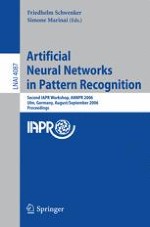2006 | Book
Artificial Neural Networks in Pattern Recognition
Second IAPR Workshop, ANNPR 2006, Ulm, Germany, August 31-September 2, 2006. Proceedings
Editors: Friedhelm Schwenker, Simone Marinai
Publisher: Springer Berlin Heidelberg
Book Series : Lecture Notes in Computer Science
